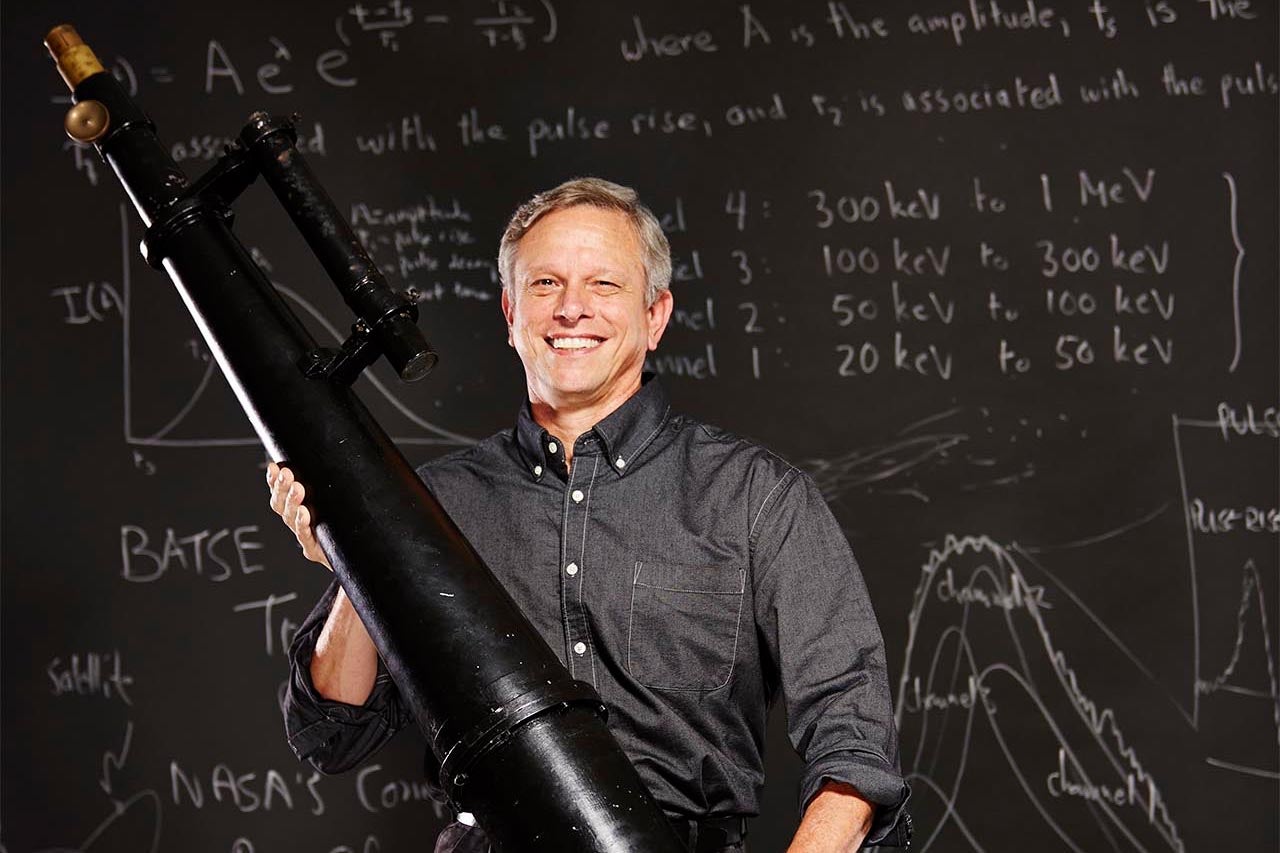It is titled “Smoke and Mirrors,” but a new discovery from College of Charleston astrophysicist Jon Hakkila may be anything but smoke and mirrors.
Hakkila and student researchers have discovered a peculiarity in the light curves of gamma-ray bursts (GRBs) that may provide a breakthrough in understanding the conditions that produce these events. GRBs are the intrinsically brightest explosions known in the universe. They last from seconds to minutes, and originate during the formation of a black hole accompanying a beamed supernova or colliding neutron stars. The narrow beam of intense GRB radiation can only be seen when the jet points toward Earth, but such an event can be seen across the breadth of the universe.
The researchers studying six very bright gamma-ray bursts discovered that the pulses composing these GRBs exhibited complex, time-reversible wavelike structures. In other words, each GRB pulse shows an event in which time appeared to repeat itself backwards.
Hakkila says they noticed this “mirroring” effect after realizing the “smoke” of limited instrumental sensitivity smeared out GRB light, giving moderately bright pulse light curves a three-peaked appearance and faint pulse light curves the shape of a simple bump. Only the brightest GRB pulse light curves exhibit the time-reversed wavelike structures.
Hakkila says that the time-reversible light curves do not necessarily violate natural laws of cause and effect. The research team believes that the most natural explanation is that a blast wave or a rapidly-ejected clump of particles radiates while being reflected within an expanding GRB jet or while moving through a symmetric distribution of clouds.
This discovery is intriguing, says Hakkila, in that it does not appear to have been predicted by theoretical models. Despite this, the discovery should provide astrophysicists with new tools in understanding the final death throes of massive stars and the physical processes that accompany black hole formation.
College of Charleston students Stephen Lesage, Stanley McAfee, Eric Hofesmann, Corinne Maly Taylor and Thomas Cannon assisted in the research.
The research is featured in the latest edition of The Astrophysical Journal.




